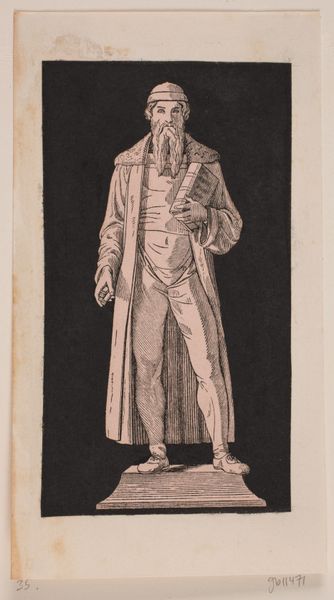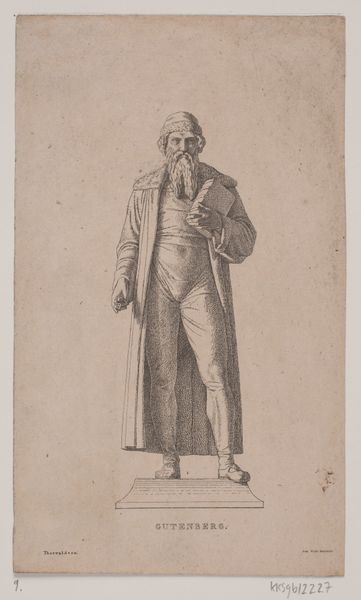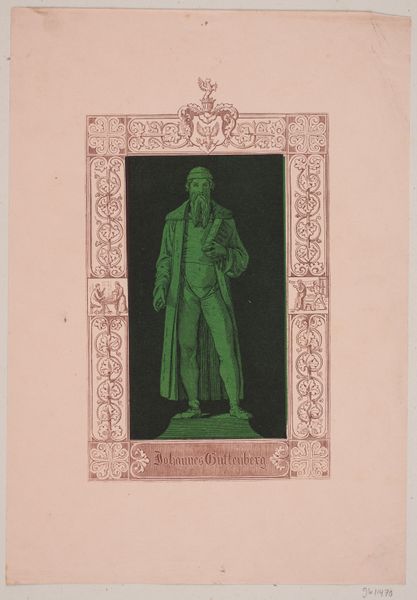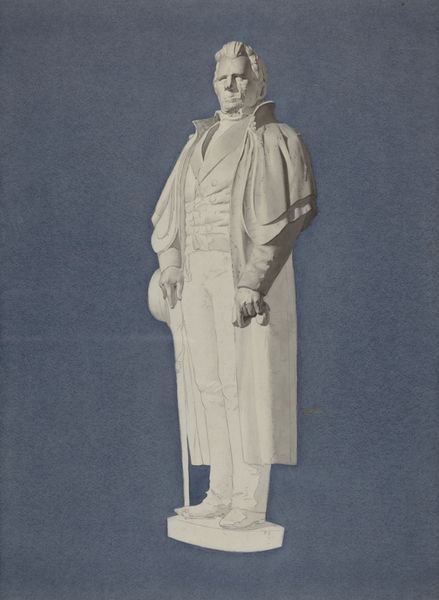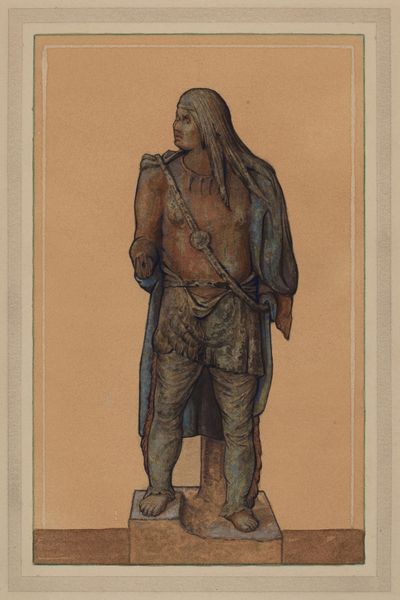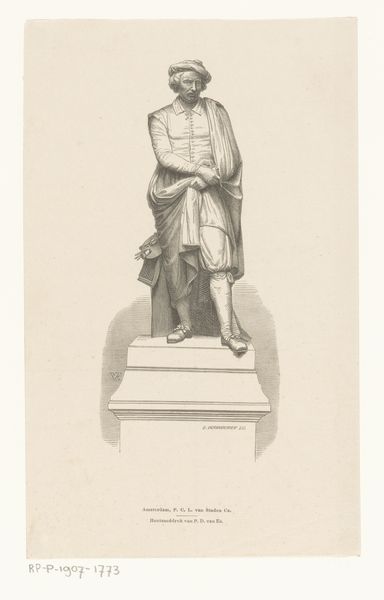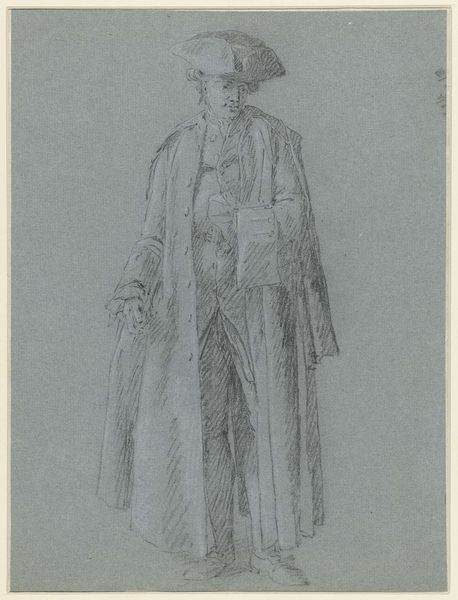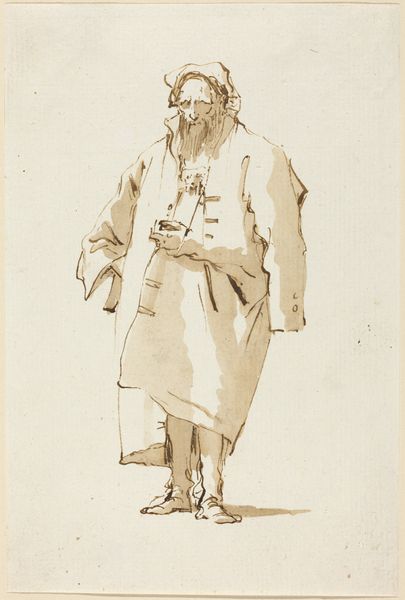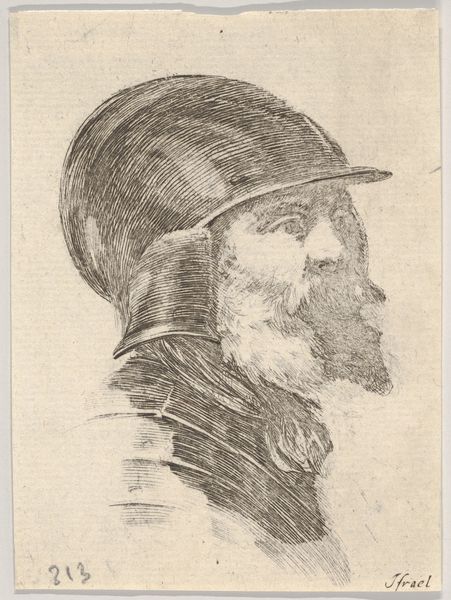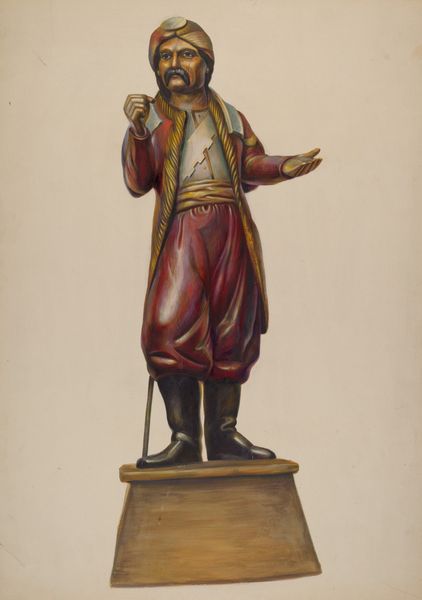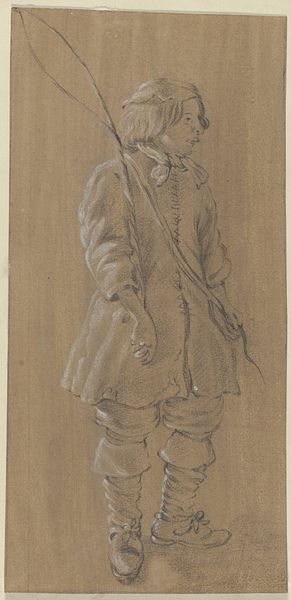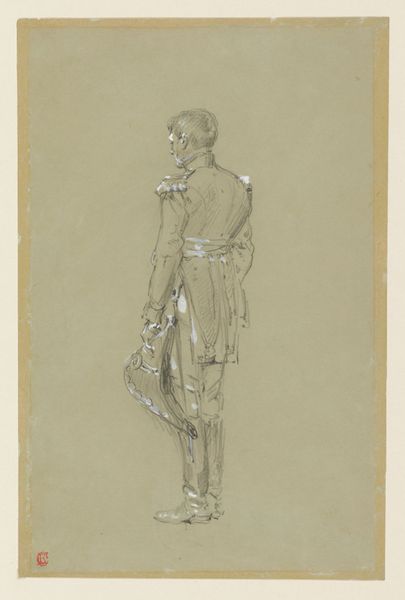
print, woodcut
#
portrait
#
medieval
# print
#
figuration
#
woodcut
Dimensions: 164 mm (height) x 100 mm (width) (bladmaal)
Curator: This is Andreas Flinch’s "Johannes Guttenberg," made sometime between 1813 and 1872. The piece is a woodcut print currently housed at the Statens Museum for Kunst. Editor: There's a compelling austerity to this piece. The stark contrast of the figure against that dense, black background, emphasizes the linear quality of the cut. The lines give it a real tangible presence. Curator: Absolutely, let’s consider the material and its relationship to the subject. Flinch used the woodcut, a printmaking technique involving carving an image into a block of wood, inking its surface, and then pressing it onto paper. The choice of the medium seems particularly appropriate here given Guttenberg’s revolutionary developments in printing. The proliferation of the printing press meant not only was literacy able to spread throughout the world more, but artists and thinkers were able to explore their creativity as well. Editor: That’s a fascinating point about the connection between the medium and the man. Thinking about the context—museums often play a crucial role in shaping our understanding and elevating specific artistic and intellectual figures, wouldn’t you say? Images like this became so pervasive because of institutions preserving and sharing the history of such notable inventions like the printing press and in turn, people like Guttenberg. It’s all intrinsically connected. Curator: Right, it prompts a critical examination of the choices we make about labor, material, and meaning. Here the artist represents a person vital to this type of artistry; there is the production and consumption of books as commodities, and access to mass knowledge. I wonder about how such a person is consumed by the audiences throughout the decades since. Editor: It really makes one think about access, impact, and who decides whose image should endure. The piece compels a recognition of how powerful institutional validation and memory are for society as a whole. Curator: Indeed, an enduring figure rendered in a medium integral to his lasting influence. It creates this cyclical connection between artist, subject, medium, and cultural legacy. Editor: Exactly, thinking through this work reminds us how vital artwork is, and how crucial are the socio-political conditions of our time.
Comments
No comments
Be the first to comment and join the conversation on the ultimate creative platform.
